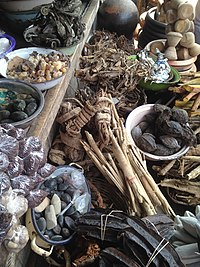
Unravelling potential biomedical applications of the edible flower Tulbaghia violacea.
Sign Up to like & getrecommendations! Published in 2022 at "Food chemistry"
DOI: 10.1016/j.foodchem.2022.132096
Abstract: Traditionally, edible flowers have been used as foods and for therapeutic purposes, today they have gained importance due to their bioactive compounds such as flavonols, anthocyanins or other phenolic compounds, which give them potential for… read more here.
Keywords: potential biomedical; violacea; biomedical applications; tulbaghia violacea ... See more keywords

Phytochemical and biological study of callus cultures of Tulbaghia violacea Harv. Cultivated in Egypt
Sign Up to like & getrecommendations! Published in 2017 at "Natural Product Research"
DOI: 10.1080/14786419.2017.1289206
Abstract: Abstract As in vitro plant cultures are used extensively to produce bioactive metabolites, our goal was to establish calli from Tulbaghia violacea Harv. flowers and assess the tissue phytochemically and biologically. Murashige & Skoog medium(MS) + 22.6… read more here.
Keywords: tulbaghia violacea; biological study; phytochemical biological; study callus ... See more keywords

Antithrombogenic properties of Tulbaghia violacea–loaded polycaprolactone nanofibers
Sign Up to like & getrecommendations! Published in 2020 at "Journal of Bioactive and Compatible Polymers"
DOI: 10.1177/0883911520903748
Abstract: A broad range of polymers have been utilized for the development of blood-contacting implantable medical devices; however, their rate of failure has raised the need for developing more hemocompatible biomaterial surfaces. In this study, a… read more here.
Keywords: tulbaghia violacea; fibre diameter; polycaprolactone;

The Green Leaf Volatile (Z)-3-Hexenyl Acetate Is Differently Emitted by Two Varieties of Tulbaghia violacea Plants Routinely and after Wounding
Sign Up to like & getrecommendations! Published in 2022 at "Plants"
DOI: 10.3390/plants11233305
Abstract: While studying aromas produced by the edible flowers of Tulbaghia violacea, we noticed a different production of (Z)-3-Hexenyl acetate (a green-leaf volatile, GLV) by purple (var. ‘Violacea’) and white (var. ‘Alba’) flowers. The white Tulbaghia… read more here.
Keywords: hexenyl acetate; leaf volatile; green leaf; hexenyl ... See more keywords

Identification of a regiospecific S-oxygenase for the production of marasmin in traditional medicinal plant Tulbaghia violacea.
Sign Up to like & getrecommendations! Published in 2022 at "Plant biotechnology"
DOI: 10.5511/plantbiotechnology.22.0619a
Abstract: Marasmin [S-(methylthiomethyl)-L-cysteine-4-oxide] is a pharmaceutically valuable sulfur-containing compound produced by the traditional medicinal plant, Tulbaghia violacea. Here, we report the identification of an S-oxygenase, TvMAS1, that produces marasmin from its corresponding sulfide, S-(methylthiomethyl)-L-cysteine. The amino… read more here.
Keywords: traditional medicinal; plant tulbaghia; medicinal plant; plant ... See more keywords